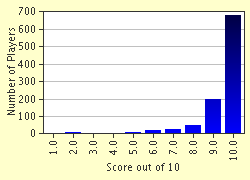Quiz Answer Key and Fun Facts
1. A brownish-red metal, this is one of the most widely used metals by humans. It was known to prehistoric people and is believed to be the first metal with which early humans made useful articles such as cooking utensils, coins and ornamental objects. It is found in the earth's crust either in the form of its ores, or in the free state due to its low reactivity.
2. With a symbol of 'Hg', this metal has a silvery colour, and is one of the few metallic elements which are liquid at room temperature, which is why its Latin name is 'hydrargyrum' (derived from the Greek word 'hydrargyros', which is an combination of words meaning 'water'and 'silver'). It is used in thermometers and several other scientific instruments, such as barometers, vacuum pumps and electric switches. Its vapours are extremely hazardous to one's health; the fumes enter and poison the body.
3. This metal's earlier name was "wolfram", which explains its symbol, "W". It melts at about 3410 degrees Celsius, which is the highest melting point of all metals. It is commonly used as the filament of light-bulbs.
4. This is a silvery-white metal, with the symbol 'Ca'. Its carbonate, CaCO3, has many forms, including marble, chalk (yes, the type teachers use to write with), limestone and calcite. This metal is present in large amounts in your teeth and bones, which is what makes them sturdy.
5. With the symbol 'Al', this is the most abundant metal in the earth's crust. It is light-weight and silvery. It is rarely found in the free state naturally, as it is fairly highly reactive. Surprisingly, many gemstones, including ruby and sapphire, are forms of this element's crystalline oxide.
6. Its symbol is 'Pb' derived from the Latin word 'plumbum'. It was one of the earliest known metals and was mentioned in the Old Testament, which is a part of the Christian Bible. It was used by the ancient Romans to construct water pipes of their famous water distribution network and sewer system. In the earth's crust it is found mainly in the form of its sulphide, galena.
7. It has the symbol 'Mn' and is principally used in making alloys, as by itself, it is rather brittle. It does not occur in the free state, except, rather strangely, on meteors. Its principal ore is pyrolusite, which is mined is large quantities in Ukraine, Georgia and South Africa.
8. This metal has the symbol 'Na', and is highly reactive, silvery-white in colour and extremely soft, in fact, soft enough to be cut by a knife. It combusts spontaneously when it reacts to with oxygen, and is hence stored in kerosene, to prevent any contact with air. It reacts violently with water to form its hydroxide. Because of its high reactivity, it can't be found in the earth's crust in the free state, and is only found in the form of compounds. The common table salt which you have with all your meals is the chloride of this metal. Other important compounds include baking soda, washing soda and borax.
9. This metal's Latin name is "ferrum" and it is a magnetic, malleable and silvery-white metal. In its metallic form it was used to make ornaments and weapons in prehistoric ages. When exposed to moist air, it oxidises and tarnishes to form a moist reddish-brown oxide, better known as "rust".
10. A dense, bright yellow lustrous metal, this is coveted by many in this world! Its symbol is "Au", derived from the Latin word "Aurum". It is extremely inactive and is hence classified as a Noble Metal.
Source: Author
achernar
This quiz was reviewed by FunTrivia editor
crisw before going online.
Any errors found in FunTrivia content are routinely corrected through our feedback system.
